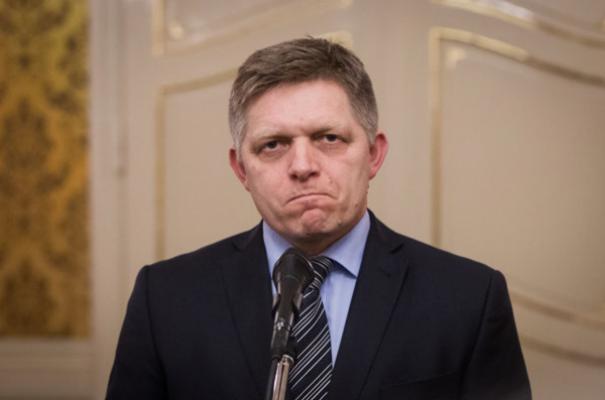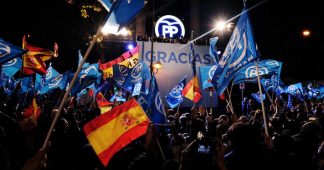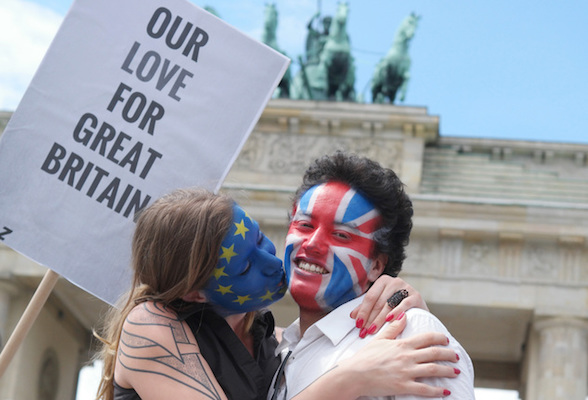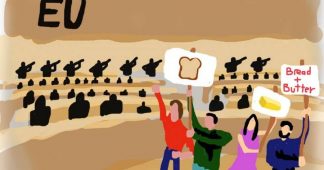2015 Trends
• Migrants
2015 was an extremely hard year for Europe: the unstable situation in the Islamic world, especially in Syria, turned the European continent into a chaos, where more than 1 million migrants entered Europe.

The immigration policy of the European Union rejects, at its foundation, any form of collective identity. This has caused the intensification of ethno-social conflicts. As a result of this migration, EU politics in Europe has changed as it has become populated by ethno-social groups of migrants from the Middle East, who are in fact the bearers of an archaic and stable Islamic consciousness, which is not known by the average European.
The exaggerated principles of tolerance, rights of individualism and multiculturalism, requires that the European political elites give to migrants the maximum liberties and do not require anything in return. As the result of this migration policy in the EU in 2015: 1) the balance between the native Europeans and migrants was broken; 2) the giant socio-cultural pole of an Islamo-Arabic population was created ( the fact of its existence is fully ignored by liberal European elites, because of the absence of the criteria of a collective identity in modern European law and politics); 3) the nutrient medium for the creation of the structures of radical Islamism were created (among the migrants were members of radical Islamic groups).
Two model examples of the “clash of civilizations” in 2015 were the Paris attacks in November, and the mass sex-attacks in Cologne. The “French 9/11” was the largest tragedy in all of French history, and the Paris attack was one of the biggest attacks in Paris since WWII. New year’s eve in Cologne showed to all the difference in gender consciousness between European and Islamic cultures, and showed that there is a cognitive dissonance regarding Islamic society (with rigid model of patriarchy), in contrast to its own fluid gender politics, which is predominant in Europe.
The only country that was truly putting into effect an anti-migration policy was Hungary. The prime-minister of Hungary, Victor Orban, practically foretold the social explosion in EU resulting from migrants, and was the first among the European leaders to appeal to close the borders (the protecting apron was created on the border of Hungary with Serbia).
The ways of illegal migration in Europe
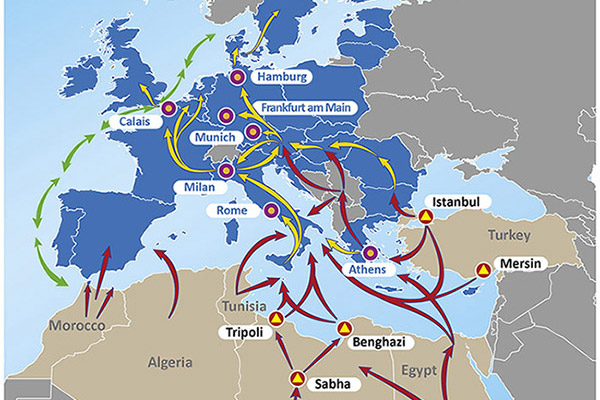
In many European countries, the anti-migration political positions began to become stronger and it also caused much criticism towards the immigration policies of Brussels.
• The increasing of the popularity of right-wing parties
In 2015, right-wing parties in Europe started to gain an increasing number of votes and popularity: The National Front in France, PEGIDA and Alternative for Germany in Germany, the Freedom party of Austria, Lega Nord in Italy, Golden Dawn in Greece.
The first round of regional elections in France showed that the National Front became not only a legitimate party, but also achieved a better legal standing.
The results of the 1st round of regional elections

These results were shocking for both left and right wing parties. The French socialist prime- minister Manuel Valls declared the necessity of creating a united front against the National Front. It was not officially created after the 1st round of elections (Sarkozy has refused to collaborate with left forces), but this front worked out.
An ad-hoc alliance was initiated by the socialist party, who withdrew their candidates from several regions, where the National Front had good results in the first round of elections. With the withdrawal of their candidates, the group of people who voted for socialist party then voted the Republican Party. The common enemy united the liberal left and liberal right.
The National Front, despite the results of the 2nd round, is one of the most popular political parties in France. The results of the 1st round showed the political will and preferences of French people. The 2nd round is a result of liberal “democratic” strategies, which included a massive media war against Marine Le Pen and the “National Front”. It’s evident that if the popularity of the “National Front” grows consistently, it can affect the results of the presidential elections in 2017.
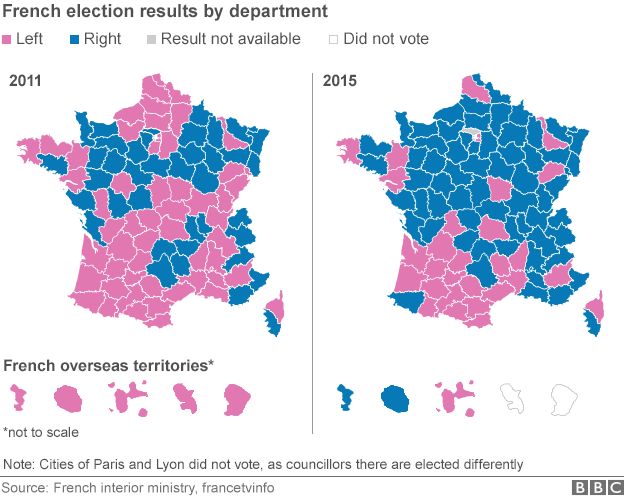
In Germany, the right-wing party PEGIDA becomes more and more popular, more than thirty-thousand people participated in anti-migrant PEGIDA demonstrations. The other right-centrist party “Alternative for Germany” becomes powerful. In 2014, it had taken about 10% in the Euro-Parliament elections. The political program of the party includes a criticism of the liberal pro-American hegemony of Brussels, and has a classic Eurosceptic dimension. The popularity of the party is increasing headily, and it will be clearly seen in the results of the march regional elections in 2016.
• Euroscepticism
One of the trends of 2015 was the reinforcement of the Eurosceptic parties in Europe: The national Front, the Alternative for Germany, the Freedom party of Austria, the Lega Nord, UKIP, Jobbik, and the Danish People’s Party. On the 16th of June 2015, a coalition of anti-EU parties “Europe of nations and freedom” was created.
Top anti-EU parties in 2014
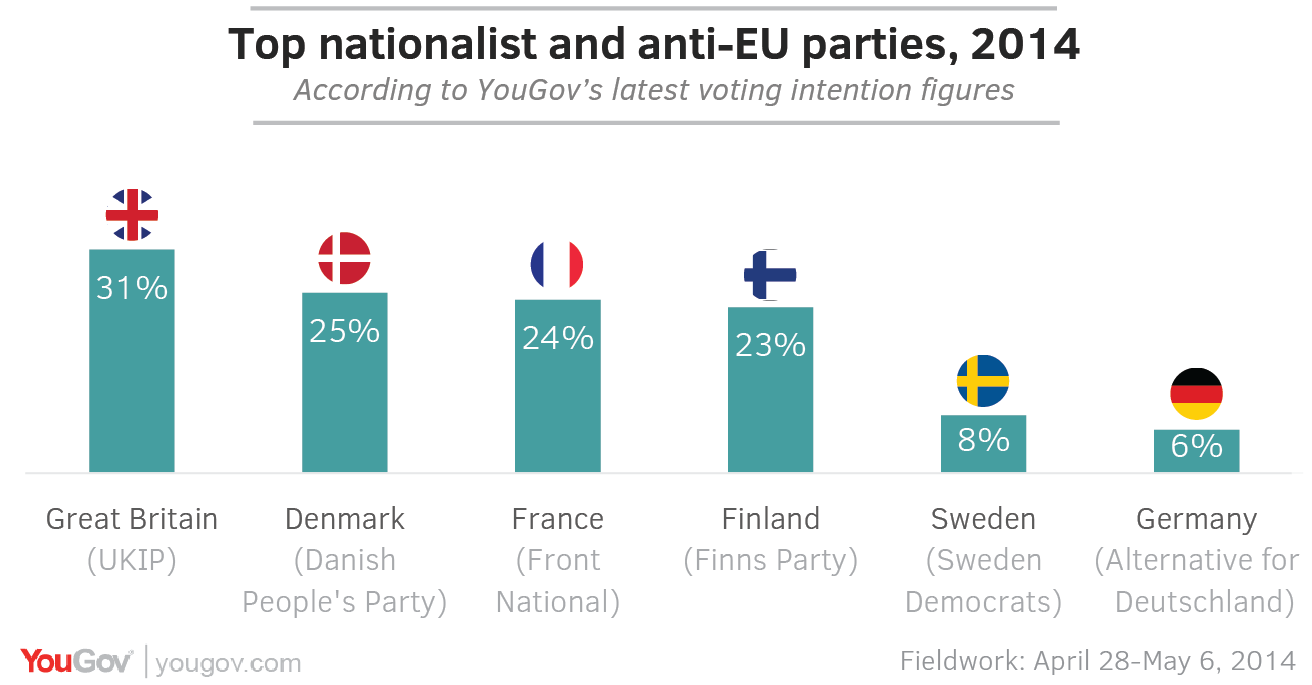
• The rise and the fall of “left”
In 2015, the Left had gained the incredibly strong positions ( especially in Greece at the end of June – when the “OXI” events had taken place and the popularity of Tsipras was incredibly high. It was the first time since the collapse of the Soviet Union when left forces had achieved such a level of legitimacy. There was SYRYZA in Greece, the increasing popularity of PODEMOS in Spain, “Cinque Stelli” movement in Italy. In 2015 (especially the beginning of the year) had shown the incredible success of left political anti-system and anti-liberal forces.
But after coming close to the power, they demonstrated the impossibility of proposing an alternative to liberal politics, which was the main point of their critics. As a result, by the end of the year they had lost their political influence and people’s confidence. The hopes were not realized.
• Regionalism
2015 was a year for the rise of regionalism in Europe. The region, that is fighting the hardest to gain independence is Catalonia, which is fighting for its sovereignty from Spain. In September of 2015, the coalition of regional separatists won in the elections to the regional parliament. (62 places out of 135). In November, the parliament of Catalonia accepted the resolution of independence of Catalonia from Spain (according to the resolution, within 18 months Catalonia will secede from Spain, during this 18 months the necessary government structures of a new state will be created in Catalonia and a new constitution will be written).
The other European region with secessionist activity, fighting for its independence, is Scotland. But ultimately the results of the referendum in 2014 in Scotland showed out that 55% of Scottish people prefer to stay a part of UK.
In Italy the “Lega Nord” party, since 1994, has been fighting for the independence of the north regions from the southern ones.
One of the examples of regionalist tendencies was the results of French regional elections, where Corsican nationalists in Corsica gained ground.
• The rising control of NATO in Europe: Montenegro case
On the 2nd of December, Montenegro received an official invitation to join NATO. The path to joining NATO is carried out by the pro-American prime-minister of Montenegro, Milo Djukanovich, who is well known by his relationship with the international criminal community, especially with the Italian mafia.
The possibility of joining the NATO block provoked a series of anti-Djukanovich protests in the capital of Montenegro. But despite the mass-protests, Djukanovich didn’t stop the process joining the NATO block, ignoring the people’s preferences.

• 2015: results
2015 brought the possibility of civil war in Europe even closer, the internal conflicts and contradictions sharpened, the quantity of international dissent increased, the split between European people’s interests and political elites’ interests widened.
Europe grew closer to the start of a civil war.
2016 Forecast
• Migrants in Europe: “clash of civilizations”
The immigrant policy of the European Union will not change its fundamentals (the principle of tolerance). The quantity of migrants will only continue to increase.
In 2016, international dissent will become more widespread. Activists of radical Islamic groups will try to make new terrorist attacks, possibly with the use of biological warfare. Europe will slowly descend into chaos and will approach the beginning of a civil war . The realization of a Syria- scenario in Europe is possible.
• The growth of the popularity of right-wing anti-system forces
In 2016, right-wing anti-system parties of Europe will become increasingly popular. The first round of regional elections showed out that the National Front became not only the legitimate party, but also achieved greater legal standing and became a real competitor for both Socialists and Republicans. The pro-system liberal forces of both left and right will toughen up the political war against Marine Le Pen and will unite in a anti-National Front block. This coalition will do everything to discredit the National Front before the president elections in 2017. It’s evident that the National Front in 2016 will be considered by French political elites as a threat to the liberal system. At the same time, the National Front will try to unite the best sides of the left economic program and right politics (conservatism, anti-migration, traditionalism).
The Republican party will try to become popular with the anti-migration agenda.
In Germany the growth of the popularity of PEGIDA is expected as well as the growth of the “Alternative for Germany”. The “Alternative for Germany” can possibly score a victory in several regions of Germany during the march regional elections of 2016. The political mood of German politics will lead towards Eurosceptisism and nationalism.
In Italy the increasing growth of popularity is expected for the “Lega Nord” party, which will try to find a way of collaboration with Berlusconi. The consolidation of right parties is also expected. The popularity of Salvini will be high, especially because of his anti-American and pro-Russian position. His influence will increase in the southern regions of Italy.
In Poland, the right-liberal-conservative tendencies will dominate (the party Civic Platform), In Hungary the consolidation of right powers is expected along with the further reinforcement of nationalist movements (such as Jobbik).
• Eurosceptisism
The Eurosceptic mood will not stop. The immigration policy of the European Union has shown the impossibility of regulating inter-civilizational conflicts, and made the terrorist attacks in Paris and sex attacks in Cologne possible.
In February 2016, the UK will revise the conditions of its membership with European Union (the revision of the Euro as the only currency in EU, the decline of participating in the programs of financial help to the countries of Eurozone, the diminution of the excessive regulation of the economics by EU, the revision in the domain of aid to migrants). A referendum about membership in the EU will be realized before the end of 2017.
The Italian government will balance between the politics of Brussels and proper economic interests (the partial elimination of sanctions against Russia). The Eurosceptic trends will be set by right-wing conservative parties.
The EU will swiftly lose trust and political influence.
• The crisis of left forces
The Greek prime-minister Alexis Tsipras and his left-wing government will not be able to solve the economic and social problems of Greece. Tsipras can’t any longer be a true left politician, he is not able to hold to his electoral campaign promises and provide for the social system. In the current tough economic situation, under close supervision of Brussels, left-wing ideas cannot be realized. The increasing dissatisfaction with the leftist forces will cause a lot of large-scale protests in Greece.
At the same time, during the loss of the legitimacy of left-wing parties, the position of right-wing parties will become stronger. The interesting phenomena is that the right-wing parties in Greece and moreover in Europe will exploit the left economic program (it’s possible that Golden Dawn will start to become more left in its economic doctrine).
In Europe in 2016, many right wing parties will become left in their economic program. The rigid model of dividing the parties into left and right wing will fail.
“Today, the split in France – is not the split between the left and right political parties, but is the split between patriots and mondialists,” said Marine Le Pen, December 13th 2015, in a speech after the announcement of results of the second round of elections.
• Regionalism
The separatist moods in Europe will become stronger. The active fight for the independence will be held by Catalonia, Corsica, and also Scotland.
• NATO and its attempts of reinforcement of its positions in Europe
NATO will continue its politics of reinforcement of its control in the European continent. The possible Montenegrin alliance with NATO will play a symbolic role for the Montenegrin people: it will symbolize a sort of pressure on the historical consciousness of the nation. The majority of Montenegrin people still remember the bombing of Yugoslavia in 1999. The violent joining of Montenegro to the NATO block is being done by NATO to break the mentality of Montenegrins, by creating a type of Stockholm syndrome and preparing the further joining of Serbia into NATO block.
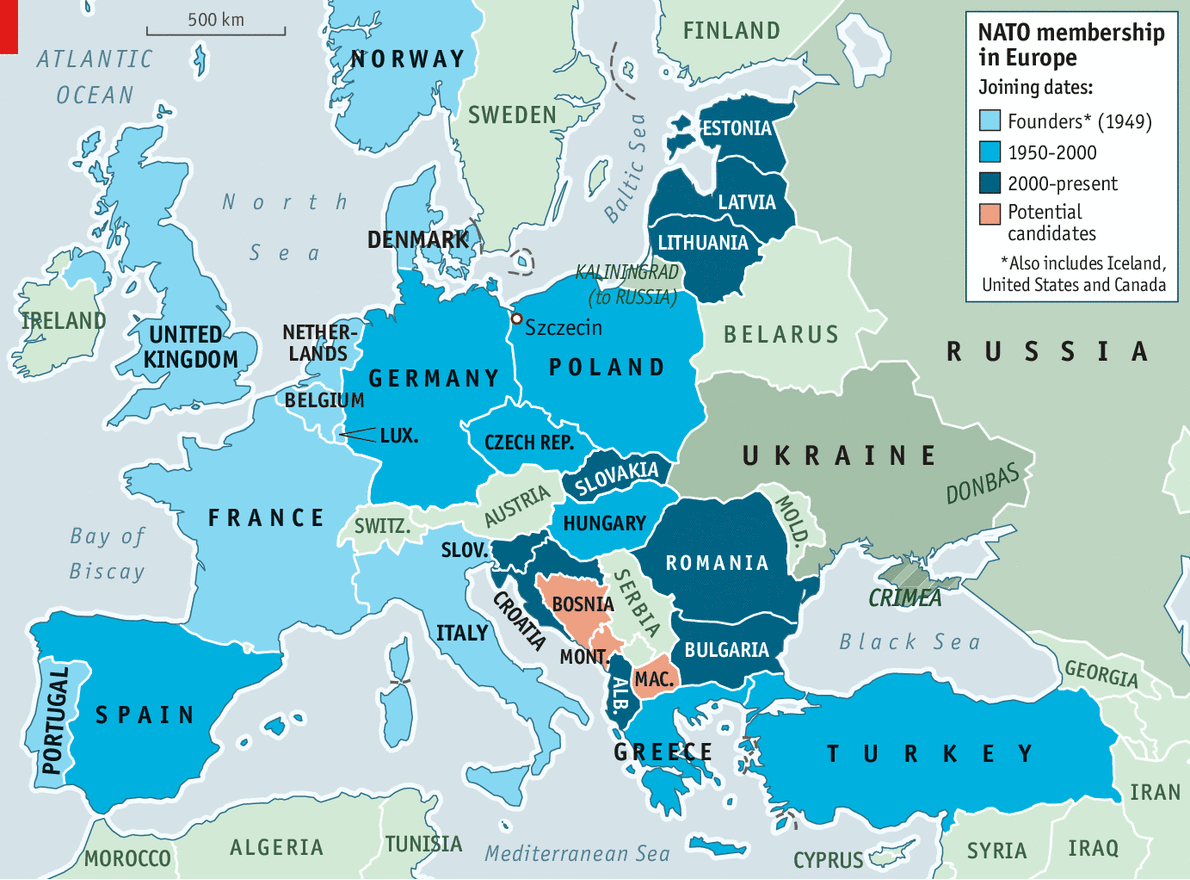
• 2016: the major trend
The major tendency in 2016 will be the beginnings of a civil war in Europe. The internal political problems and conflicts will increase headily. The split between the liberal political elites and European nations will enlarge. The speed and the dimensions of events will increase sweepingly (among them, terrorist acts, murders, etc.). We can predict the date when a civil war in Europe will begin if we can analyze the speed and the dimensions of European events in 2016.
